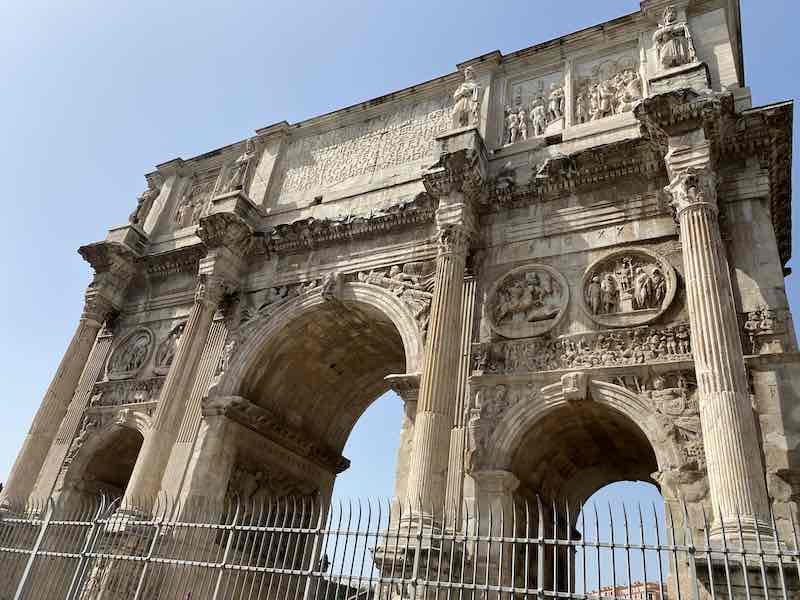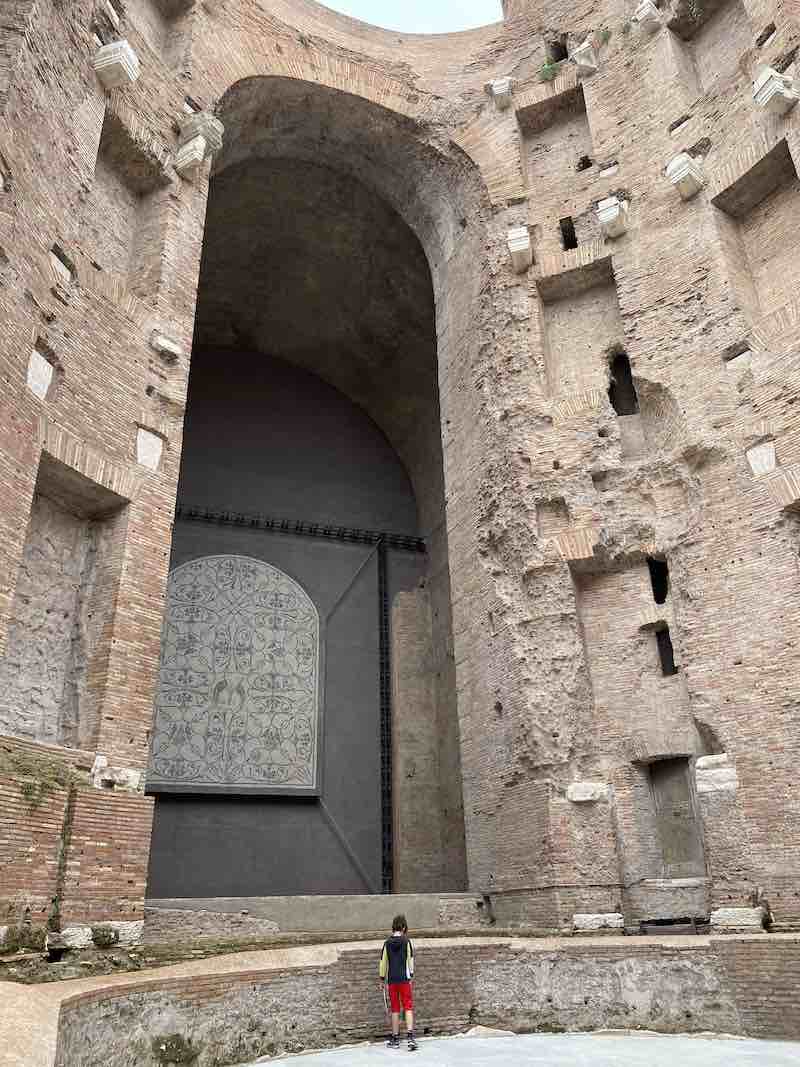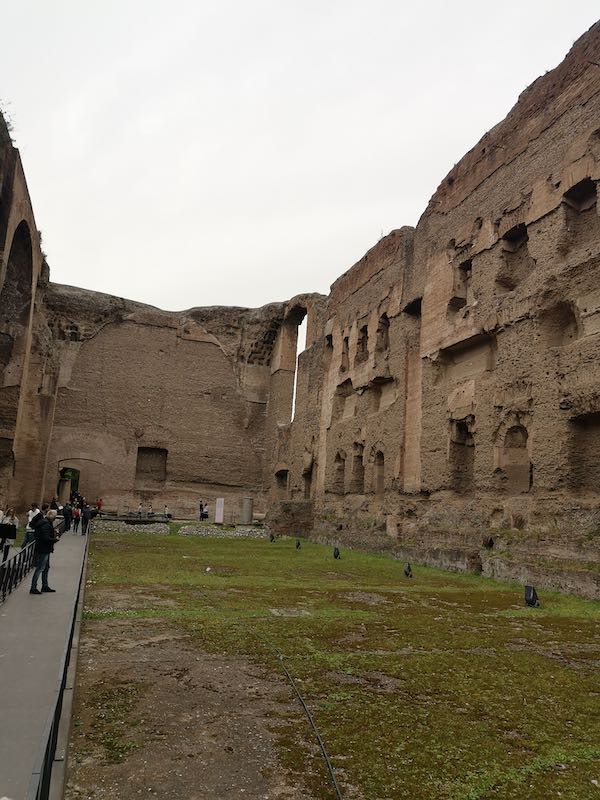Roman pastimes: all you need to know about leisure time in Ancient Rome. Most popular ancient Roman games, sports, shows and leisure activities for ancient Roman adults and kids.
The Romans built one of the most powerful empires in history. However, they were not all work and no leisure!
Ancient Roman society gave great importance to leisure activities and considered down time essential to a balanced life.
Ancient sources tell us extensively about the Roman’s view of leisure.
Writers such as Cicero, Sallustius and Catullus committed to writing their favorite ways to relax.
Frescoes and mosaics from Pompeii, Ancient Ostia and Piazza Armerina show us many of the leisure activities ancient Roman men and women loved the most.

Thanks to these sources, historians learned the most popular leisure activities in Ancient Rome.
They included games, sports, shows, music and eating, not unlike what we consider leisure activities nowadays!
I am a Roman history graduate and find the history of private life in Ancient Rome fascinating.
Even more than significant historical events and battles, I find learning about the daily life of ancient Romans an incredible way to gain insight into their society and culture.
Today, I talk about what we know about leisure activities in Ancient Rome, ancient roman pastimes, games and sports.
Leisure time in Rome: What was Otium?
Ancient Romans had two expressions to define work and leisure time:
Negotium = the time for political life and trade
Otivm = the time to rest and relax
Otivm is a Latin noun that defines all those moments of daily life when a person is not involved in public life and trade but can relax and unwind.
It was a state wealthy Romans aspired to and that usually involved activities such as personal hygiene, massages, reading, meditating, eating with friends and going to public shows and games.
Otium was an important part of ancient roman culture and many ancient writers such as Cicero, Sallustius, Catullus, and Seneca mention free time and its role in a balanced life.
A useful quote to understand what otium was for the Romans comes from Cicero. In Pro Sextio, he writes:
Id quod est praestantissimum, maximeque optabile omnibus sanis et bonis et beatis, cum dignitate otium. Usually translated as: The best and most desirable thing for all that are healthy, virtuous and happy is dignified leisure.
Other useful Latin words about leisure time, activities and Roman pastimes are:
- Ludus / Ludi = game / games
- Lusus = sport
- Iocus/ Ioci = game / games
- Alea = dice
- Calculi = pebble / game piece / game pawn
- Tabula = board
- Tabula Lusoria / Taulae Lusoriae = board game
The most popular pastimes in Rome
The most popular pastimes in Ancient Rome included:
- Going to shows and public events
- Ball games
- Board games
- Personal hygiene and fitness
- Music
- Dinner parties
Roman Spectators Sports and shows
Romans adored spectators sports and had a particular passion for those that involved speed, violence and a high level of risk for the participants.
Among the favorite sports, we find:
Chariot racing
Chariot racing was the king of ancient Roman sports and one of the most popular Roman pastimes.
The races happened in designated spaces called circus, two of which are still well visible in Rome.
The Circus Maximum and the stadium of Domitian, now know as Piazza Navona.

The chart stadium was a large, oblong structure with two metae at the two ends: participants were to race around them a certain number of times, if victorious, would be rewarded with honour and glory.
Chariot races happened with bigae, trigae and quadrigae and were extremely dangerous.
It was very common for chariots to capsize and for the horses and men to be run over by the other participants.
Fun fact! Thanks to augmented reality, you can now get a sense of what a chariot race in the Circus Maximus would have been like! Read about the Circus maximum Virtual Experience here.
Naumachiae – spectacular naval battles
Naumachia is a Greek word meaning naval battle and describes shows that re-enacted important naval victories for the pleasure of the crowds.
Naval battles were one of the most popular and spectacular forms of entertainment in Ancient Rome and many sources from late antiquity bear witness to their grandeour.
It is reported that the Colosseum would host naval battles; however, it seems this spectacular use wasn’t common and possibly only happened once, in the occasion of its inauguration.
Venationes – Hunting games
The term venatio, in Latin, means hunt and venationes were spectacular hunting games that happened in Roman theatres as a form of entertainment.

We have many ancient sources telling us about them.
Venationes took several forms: in some case, they saw animal flights and in others you would have people and animals facing each other.
Venationes were violent and dangerous but much beloved.
It is reported that emperors went to all lengths to get animals that would impress and surprise the crowds and we have depiction of animals fights involving wolves, large felines and even bear.
The Colosseum is the most famous theater for venationes: the wild animals were kept below the main arena and lifted my manual lifts operated by slaves.
The appearance of the beast was a showstopper than never failed to impressed the spectators.
Gladiator games – Ludi Gladiatorii
Gladiator combats is probably the best known form of ancient roman game and an exceptionally beloved pastime in Republican and Imperial times.
Gladiator battles have been depicted and described at length by authors and historians and they have inspired painters and filmmakers, who often gave their own twist to historical event.
Gladiator fights were shows were professional would fight in front of a crowd.
Gladiators fought with different types of weapons that depended on their built and skills and included short swords (gladius), spears, shields and more.
Gladiators were often slaves and they belonged to their trainer. They would put them to training and would pay for their maintenance.
Like professional athletes, a successful gladiator who pleased the crowds would be worth a lot of money. Therefore, in most cases, the fights were not to the deaths.
You can read here >>> fun and interesting facts about Roman Gladiators
Public executions – the most gruesome of Roman pastimes
This is a rather disturbing for Western modern sensitivity, but Public executions were a popular form of entertainment in Rome.
In Imperial times, they were a standard part of the Colosseum games and would be performed along gladiator games and shows.
Comedies and theatre
Theatrical representations were another popular roman pastime
The representation of comedies and tragedies was common in Rome and usually part of long days of games and celebrations.
The most common shows were comedies, mimes and tragedies, both from Ancient Greece and by original Roman writers.
Triumphs and openings
As well as sporting events, the Roman participated in other shows, usually attached to public life celebrations and events.
Among the most famous, we remember the following.
Triumphs
A triumph, was a celebratory procession to honor a war victory.

The victorious general would walk along Via Sacra in Rome showcasing the fruit of his victory, which usually included the riches taken from the defeated army and war prisoners.
People would gather and cheer; games and show would be performed for everyone to enjoy.
Thriumps happened since ancient Republican times; however, the most important archaeological ruins we can still see are from the time of the empire. They are Roman triumphal arches, still standing in Rome and several other Imperial cities.
You can read here >>> all about Roman triumphal arches and where to see them.
Lusus Troiae – Game of Troy
Lusus Troiae was one of the most popular sport games involving horses or more precicsely an equestrian event.
It took places in three specific situations: at a public funeral; at the inauguration of a new temple; after a triumphal procession.
The best description we have is by Virgil.
In the Aeneid, he described the game as a series of equestrian exercises carried out by groups of twelve riders (turmae) to entertain the spectators with showcase of war skills and riding ability.
You can read more about public shows and games here >>> our guide to games and shows in Ancient Rome
Thermal baths: quintessential Roman leisure activity
Ancient sources and imposing archaeological ruins tell us about the love Romans had for their bathhouses.

Thermal Baths in Rome were an important part of ancient life and the fulfilled many roles.
At the most basic level, the baths were a place for personal hygiene. Here, ancient Romans could bathe, swim and stay in shape with gymnasium.
As well as this, Roman bathhouses were place for conversation and studying.
As the Baths of Caracalla and the Baths of Diocletian in Rome show, bathhouses had pool and gyms but also large libraries and areas for private meditation and rest.
Ancient Roman sports for private practice
Ancient paintings and mosaics show men and women busy practicing calisthenics, weightlifting and several other sports either.
These were very much individual practices and were aimed at maintaining a healthy lifestyle.
The most popular sports in Ancient Rome included:
Swimming
Swimming was one of the most popular sports among Roman men and women. Swimming skills were an essential part of a young man’s education, especially, and beautiful mosaics in Ostia Antica keep the memory of such a sport.
Ancient Romans practiced swimming in the Tiber river and the sea; thermal complexes also had a special area devoted to this sport: the natatio.

Boxing, wrestling and pancratium
Boxing was a trendy sport in Ancient Rome, which they practiced to improve fitness, stamina and strength.
It was usually practiced in a palestra, a dedicated area within thermal baths complexes and seems to have.
According to the ancient representation of boxing athletes, boxing was practiced not with gloves but with leather straps wrapped around hands and knuckles.
Other popular roman pastimes for physical fitness were wrestling and Pancratium.
Ancient sources define this sport as a violent one, where two fighters would engage in body combat. There were only two main rules in this game: not and no blinding, but the rest was allowed. This made for a violent yet, for roman standards, highly entertaining endeavor.
Running, calisthenics and weightlifting
Running and calisthenics and weightlifting were an important part of the Romans’ fitness regime.
A popular location for these ports was Campus Martius however, we have many frescoes and mosaics depicting men and women exercising in location that look like gymnasiums and Roman baths.
Ball games of Ancient Rome – most popular Roman pastimes for kids and adults
Ball games were one of the most popular Roman pastimes for kids as well as adults.

Suetonius says that Augustus, after the war, abandoned horseriding and sword practice and instead devoted himself to playing with the ball.
Ancient rome ball games used different typed o balls, deginfied by their wight and use.
- Pila Paganica was a medium sixe ball filled with feathers.
- Pila trigonalis was a small, hard ball filled with crine
- Follis was a leather ball filled with air
Popular Roman ballgames were Harpastum, Trigon and Follis.
Harpastum
Harspastum is commonly considered the ancestor of modern rugby.
The game came to Rome from Ancient Greece, where it was called arpaston, and had huge success in Rome and the Italian peninsula first, spreading all over the empire as the roman conquests grew.
We do not know much about this game. However, ancient sources give us some details.
Harpastum was a team sport, played with a ball filled with wool or other textile.
The aim of the game was for one team to bring the ball all the way to the end of the adversary’s side of the field, scoring what we now call a touchdown.
The games developed with rapid passages between players and we would see fights for the possession of the ball.
Galen’s treatise “On Exercising with a Small Ball” describes harpastum as a game in which the basic idea is to throw the ball to one another and stop the ‘man in the middle from getting it.
And even though this game included an element of wrestling, in Galen’s opinion, and unlike running or horseriding, ‘it entailed no danger’.
There was no particular stadium for such a game; rather, games happened wherever there was space, usually on dirt rather than grass, as suggested by the most common adjective used to describe it: pulverulentus (dusty!)
Good to know! Since this game required physical prowess, historians believe legionaries played it as a way to have fun while keeping fit. A representation of harpastum is now in Tomba dei Dipinti, Via Portuense, Rome, a tome dating to the II sec. A.D.
Follis
Follis was a popular ball game that took the name for the ball used, the follis.
According to Martial (XIV, 47), the game was popular between kids and older men especially, which makes historians believe it likely had simple rules and did not demand excessive effort.

Trigon
We know about trigon thanks to ancient sources that tell us Maecenas played in Campo Marzio.
While we do not know much about the rules of this game, apparently, it foresaw three players in a triangular formation, passing an oval ball to each other, using their hands.
Ancient Roman Board Games
Ancient Romans played a wide variety of board games. Historians and archaeologist tell us about the most popular.
Ludus latrunculorum/ Latrunculi – Roman chequers
Latrunculi was a popular board game played in ancient Rome and that we understand as a strategy game and an ancestor to chequers or possibly even chess.
The game was played with pieces called calculi, probably in the number of 16 or 30.
Players could move them horizontally, vertically and diagonally and the aim was to raeach the opposite side of the board without getting captured by your adversary.
Capturing happened when the calculus was trapped between two enemy pieces.
Once a calculus reached the opposite end of the board, it acquired new powers that, sadly, we do not have written memory of.
Terni Lapilli – Roman Tic-tac-toe
Terni lapilli is the ancestor to tic-tac-toe and used to play drawing lines on the ground.
As far we know, each player had three pieces and the aim of the game was to put them in a raw, moving them around ht board as needed.
This was a popular children games used as entertainment and to develop strategy skills.
Ludus Duodecim Scriptorum – Roman backgammon
Ludus Duodecim Scriptorum, was a board game popular during the time of the Roman Empire played with a board (Tabula) with twelve rows of marking
The name translates as “game of twelve markings”, and seem to have been a sort of ancient Roman Backgammon
Dice games and games with nuts/pebbles
Romans loved dice games and we have information about several of them, played with dice of different shapes and materials.
We also know Roman children played with nuts, which they could use as game pieces in thrawing and strategy games.
We have sources telling us about games such as:
Tropa, a form of roman Knucklebones,
Delta, played by throwing dice or pebbled in a triangle,
Orca, a throwing game
Ludus Castellorum, a sort of ancient jenga
Tabula Inclinata, a rolling game
Music
Music was another popular form of entertainment of Ancient Rome.
The most popular musical instruments where the lyra (string instrument), the sistrus (percussion), the crotalus (similar to modern day castanets), the petra (sting instrument), the harp and the flute.
Banquets and dinner parties
Dinner parties were and important part of social life for the wealthiest parts of Roman society.
We have many representations and description of lavish Roman dinner parties and we know they tended to be long and elaborate affairs with an abundance of food, wine, music and entertainers.
Fun fact! Emperor Nero loved banquets. In his Domus Aurea is is still possible to see the banqueting room: it is easy to recognize by the black paint on the walls, meant to hide the marking from the smoke of the always- on grill!
I hope you enjoyed this overview of roman pastimes, sports and games from Ancient Rome and it gave you an idea about what leisure time in Ancient Rome looked like.
